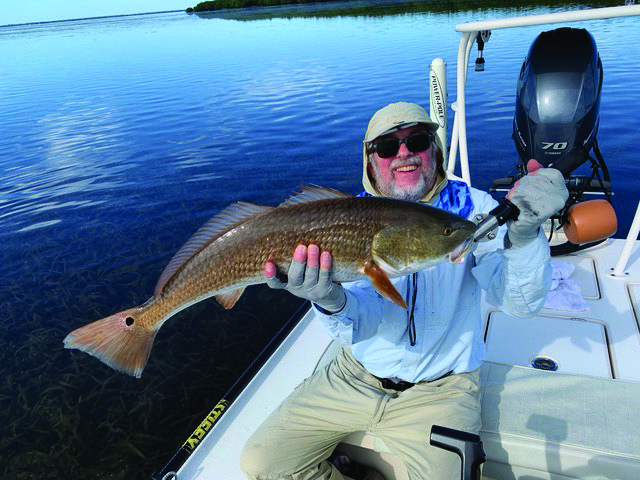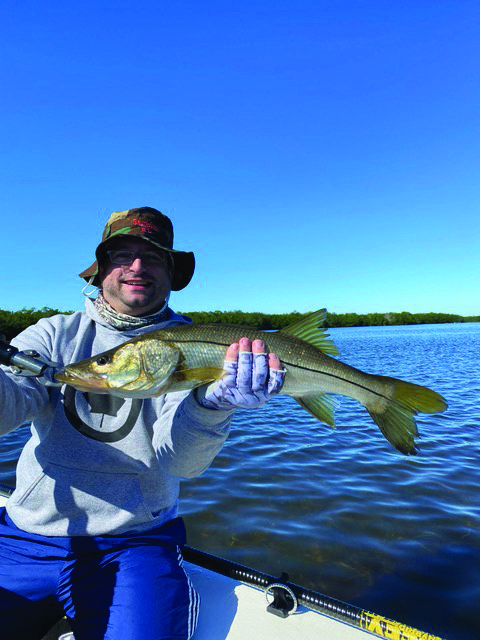By: Capt. Mike Manis
This month could be considered the beginning to some of our best fishing. Springtime is always a great time to be on the water as the water temperature is warming but the air temperatures still comfortable. Our local fish like snook, redfish, and even the spotted sea trout are transitioning with the warmer water and are moving around looking to fatten up after the slim pickings of winter. In particular, they’ll key on the scaled sardines that will move back into the harbor and surrounding bays and sounds from offshore where it’s been holding in the deeper more stable habitat all winter.

Too, we could find ourselves fishing anywhere from the backcountry to just inside the beaches. For the most part, the wind on any given day will determine where I’ll fish. On the calmer days, I’ll put in some time looking for early season migratory tarpon and when it’s blowing, I’ll stick closer to the backcountry looking for snook and redfish. For snook, remember that corners and points hold the most fish. Snook are ambush feeders and do prefer moving water or strong current. It’s no coincidence that there are more fish in spots where the current moves swifter, around points. However, keep an eye off of the mangroves. On more than one occasion, I’ve found myself poling tight to the mangroves while spotting fish moving off from outside the boat. Moreover, these were always the larger fish.
The spotted sea trout bite has been pretty good all winter and there’s a good chance the larger fish will get more active when the scaled sardines make their way onto the grass flats. Keep in mind, when this bait first arrives it typically sets up on the best grass flats closest to the passes.
If you find yourself on the East or West Wall and are looking for a change of pace, don’t hesitate to drop off the bar and spend some time looking for cobia. Pompano are still around and the hard bottom just off Cape Haze Point can be good. Also, spanish mackerel should be scattered all over the harbor. The easiest way to find one of these schools is to find the birds.

For another good idea on a calm morning, take a look in the upper harbor for rolling tarpon. These are resident fish coming out of the rivers. They’ll spread out from the U.S. 41 Bridge to the mouth of the Myakka and down to the 20-foot hole off the West Wall. The numbers of ladyfish in the upper harbor probably have something to do with why the tarpon like the area. In addition, I’ve seen schools of big jacks making their way through this area.
